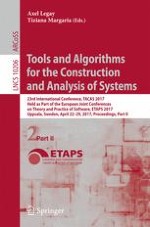2017 | OriginalPaper | Chapter
ARES: Adaptive Receding-Horizon Synthesis of Optimal Plans
Authors : Anna Lukina, Lukas Esterle, Christian Hirsch, Ezio Bartocci, Junxing Yang, Ashish Tiwari, Scott A. Smolka, Radu Grosu
Published in: Tools and Algorithms for the Construction and Analysis of Systems
Publisher: Springer Berlin Heidelberg
Activate our intelligent search to find suitable subject content or patents.
Select sections of text to find matching patents with Artificial Intelligence. powered by
Select sections of text to find additional relevant content using AI-assisted search. powered by
